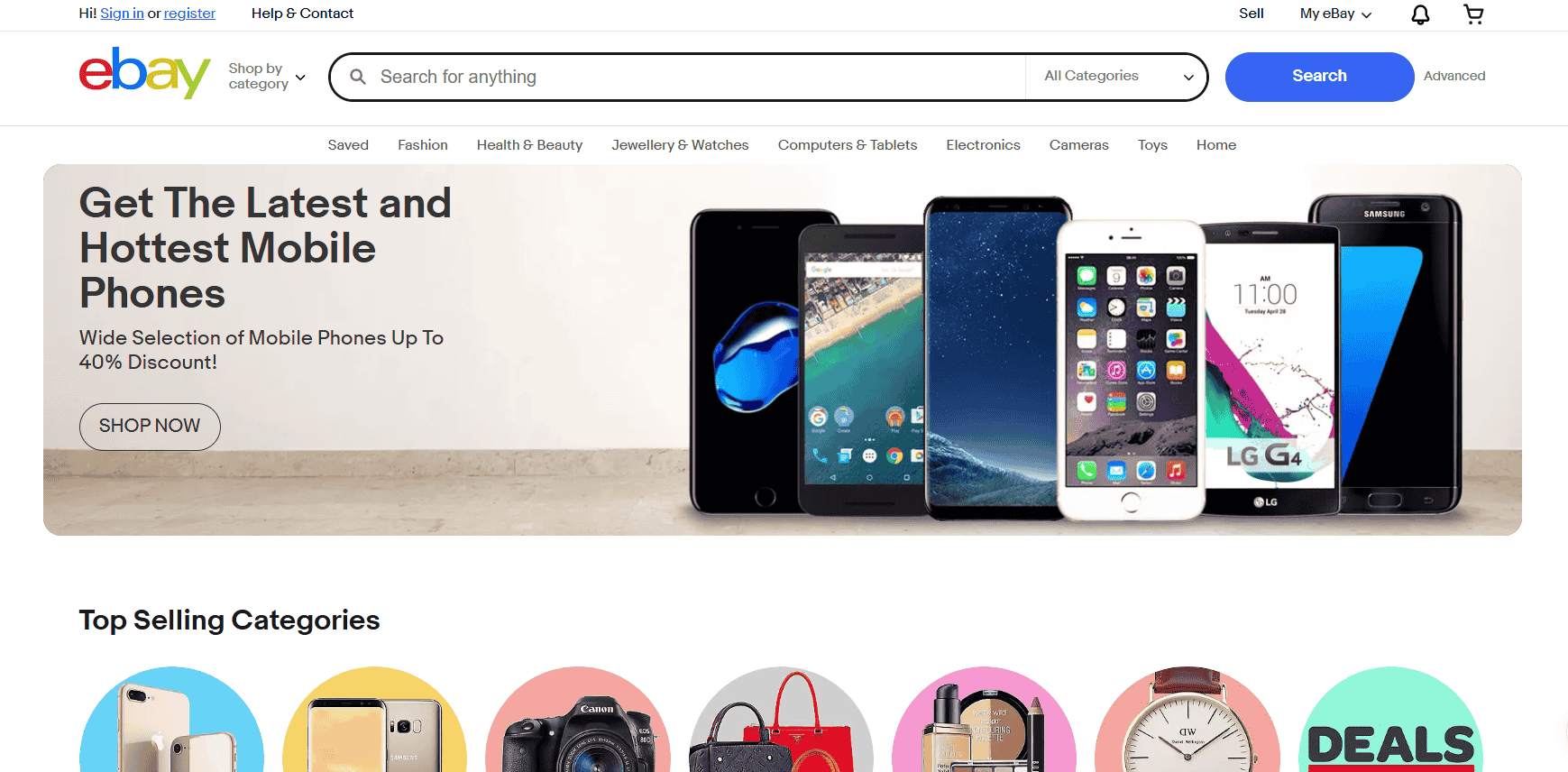Running an online store means constantly chasing lower costs and higher margins. That’s the daily hustle. So when a platform like Temu bursts onto the scene offering $1 gadgets, $2 plushies, and viral accessories that look like they belong in a $20 boutique, it grabs attention fast.
It’s a playground for bargain hunters, and naturally, online sellers start asking the big questions: How is this stuff so cheap? Can I use Temu to test product ideas? Or will it cost me more in returns and reputation?
You’re not alone in wondering whether Temu is too good to be true. I’ve worked with clients who were thrilled with how fast they could turn around trend-based listings using Temu finds. But I’ve also seen sellers get burned: fake products, shipment delays, and customer complaints that quickly pile up.
This post lays it all out: what Temu actually is, how it dodges tariffs, why products like Temu Labubu can land you in hot water, and whether this marketplace is a smart source or a risky shortcut for your business.
Is Temu a Chinese company? Who Owns It?
Temu is an online marketplace owned by PDD Holdings, the same Chinese conglomerate behind Pinduoduo, one of the fastest-growing shopping apps in the world.
Pinduoduo became a household name in China by offering ultra-low prices through group buying, racking up over 900 million users along the way. That same aggressive pricing strategy has been repackaged for international audiences through Temu.
Temu isn’t just riding the wave of cross-border ecommerce. It’s steering it. After launching in 2022, it didn’t take long for Temu to dominate app stores in the U.S., often outranking giants like Amazon and Walmart in download numbers.
Temu’s marketing budget runs deep. It ran a Super Bowl ad within a year of its launch, signaling it’s not playing small.
The way Temu gets products to customers is where things really stand out. It uses a cross-border fulfillment model, which means goods are shipped directly from manufacturers or warehouses in China to shoppers overseas.
There are no U.S. warehouses, no middlemen, and no bulk importation. Just individually packaged items arriving at your doorstep.
That setup cuts costs but also raises questions about delivery times, quality control, and import regulations. It’s a lean, low-margin model built for volume and speed. For U.S. online sellers looking to understand how Temu keeps its prices so low, this cross-border fulfillment model is key.
Is Temu a legit site?
Temu is 100% real and operational. It’s not some shady website built to steal your credit card details. You can place an order, track it, and receive a product at your doorstep.
The site uses encrypted payment gateways, accepts major credit cards, and offers refunds through its buyer protection policy. There’s also customer service, though you might need patience. Wait times can get long, especially during promo events or holidays when orders spike.
What throws people off is the gap between expectations and reality. You’re browsing a slick-looking app, but you’re often buying from suppliers with factory-level presentation and unpredictable quality control.
That’s where “legit” becomes subjective. Are you getting what you paid for? Technically, yes. But is it always what you thought you were getting based on the photo and description? Not always.
Temu works like a digital flea market with next-day shipping. Some days you’ll stumble onto something brilliant. Other days, you’ll end up with a dud.
On Trustpilot and Reddit, you’ll find thousands of reviews from actual customers. The average rating tends to hover between 3.5 and 4.2 stars, which reflects a mixed bag of experiences.
Most of the issues stem from the same three complaints: it arrived late, it wasn’t the size I expected, or it felt cheap. Not fraud, just misalignment.
One of my clients who ordered tech accessories in bulk for resale told me straight up: “Half of them were fine. The other half? I wouldn’t even use them myself.”
Temu is not a scam site, but it’s not luxury shopping either. You’re working with suppliers halfway across the world offering rock-bottom prices, so it helps to manage your expectations.
Think of it like buying from a flea market online. Some days you score a hidden gem, and other days you get something that ends up in the donation pile.
Is Temu the same as Shein?
Temu and Shein might look similar at first glance, both offer rock-bottom prices and products straight from Chinese suppliers, but they’re built on completely different models. Shein is a vertically integrated fashion company. It designs, manufactures, and ships its own clothing.
That’s why you’ll see the same dress across multiple colors, sizes, and photoshoots with consistent branding. The control over its supply chain allows Shein to fine-tune trends quickly and restock bestsellers with precision.
Temu, on the other hand, works more like a massive digital bazaar. It’s a marketplace where various third-party suppliers list their products, ranging from socks to mini vacuum cleaners to furniture.
There’s no single style or brand identity. You might find five listings for the same product, each from a different factory, with slight differences in material or packaging. That’s part of the appeal and the chaos.
The variety is what sets Temu apart. While Shein focuses almost entirely on apparel and beauty accessories, Temu casts a much wider net. One of my clients who runs a niche home decor dropshipping store used to rely heavily on Shein for staging pieces like vases and pillows.
But when she expanded into techy home gadgets and budget-friendly kitchen tools, she found what she needed on Temu. The product range helped her offer more variety to customers without juggling multiple suppliers.
Think of it this way: Shein is like walking into a well-organized clothing boutique with one designer in charge. Temu is more like browsing through rows of vendor stalls at a massive international trade fair: unexpected, messy, but full of potential.

Can You Sell on Temu?
Temu isn’t built like Amazon or eBay where anyone can sign up, upload product photos, and start selling. At this point, Temu works exclusively with vetted Chinese manufacturers and large-scale wholesalers.
That means if you’re a U.S.-based online seller looking to open a shop on Temu itself, you’re out of luck, for now. The platform controls who gets to list, and it prioritizes direct relationships with factories that can handle mass production and fulfill orders at scale.
That doesn’t mean Temu is off-limits to sellers entirely. A lot of online entrepreneurs are getting creative by using Temu as a product sourcing hub instead.
It’s a place to find low-cost, trending items and resell them elsewhere, on Facebook Marketplace, Etsy, TikTok Shop, and even at weekend markets or pop-up booths. You’re essentially tapping into the supply side of Temu without being one of its official sellers.
I’ve worked with several clients who did exactly this. One seller sourced quirky novelty items like mini humidifiers and retro kitchen timers from Temu and resold them on TikTok Shop with a markup.
He repackaged them with simple branding, added custom thank-you cards, and positioned them as “aesthetic must-haves.” The margins weren’t huge, but the volume made it worthwhile.
There’s potential here, but you have to tread carefully, especially when it comes to branded or trademarked items. Some of what you see on Temu might look harmless, but it could be skating on thin legal ice.
You’ll want to avoid anything that copies a known brand or character because those shortcuts can lead to takedowns, refunds, or worse. We’ll get into that shortly.
How U.S. Sellers Benefit From Temu
Temu can be a practical tool for sellers who want to move fast without spending a fortune up front. It’s ideal for testing new product ideas or jumping on seasonal trends without getting locked into bulk orders.
You don’t need to spend thousands on inventory to find out whether a particular gadget, beauty tool, or plush toy will catch fire in your niche. Many of the listings offer low minimums, or no minimums at all, so you can grab a few pieces, test the waters, and only scale up once you see demand.
Shipping is another perk worth noting. While it’s not lightning-fast, Temu often includes free or extremely cheap shipping even on single units. Most packages arrive in about 7 to 15 days, which isn’t bad when you consider they’re coming from warehouses in China.
For sellers who are transparent about shipping times or who build in pre-order models, that delay isn’t a deal-breaker.
The product variety is massive, and trends move quickly on Temu. One day, it’s mini projectors. The next week, it’s kinetic desk toys or mushroom-themed home decor. Sellers who keep an eye on what’s gaining traction, especially on TikTok, can use Temu as a low-cost trend lab.
I had a client who did exactly that. He ran a TikTok shop and decided to test 12 different viral gadgets he saw trending. All of them came from Temu. He repackaged the items using custom labels, added simple instruction cards, and marketed them with short demo videos.
His total investment was around $300. Within a few weeks, he cleared $2,000 in profit, all without touching a freight forwarder or hiring a warehouse.
There’s real opportunity here for sellers who understand speed, timing, and presentation. Temu makes it easy to dip your toes into new categories without drowning in inventory risk.
What You Need to Know About Temu Tariffs
Temu’s pricing power in the U.S. market isn’t magic. It’s legal strategy. It takes full advantage of the “de minimis loophole” in U.S. trade law, which allows any imported shipment valued under $800 to enter the country without paying duties.
This rule was originally intended to make life easier for individuals ordering low-value goods from overseas, but platforms like Temu have used it to scale aggressive shipping models.
By sending products in small, individual packages rather than in bulk, Temu keeps nearly all of its shipments below that $800 threshold, avoiding the tariffs that most traditional importers can’t escape.
This tactic has drawn major criticism from U.S. manufacturers, retailers, and lawmakers. While American sellers often absorb hefty fees on imported inventory, Temu’s model allows it to bypass those costs entirely, giving it a pricing advantage that feels impossible to match.
That advantage may not last forever. In 2024, the House of Representatives proposed legislation to tighten or eliminate the de minimis rule for certain high-volume importers, particularly those based in China.
Temu might offer unbeatable prices, but when it comes to branded or collectible products, those low prices often come at the cost of authenticity, and your reputation.
Lawmakers pointed to both unfair competition and potential risks from unregulated products entering the country.
For online sellers sourcing from Temu, this is something worth watching. You may be saving money on customs now, but a policy shift could change that overnight.
A change in the de minimis threshold, or a carve-out excluding platforms like Temu, could mean sudden cost increases, unexpected delays at customs, or extra paperwork you’re not used to handling.
I always advise my clients who rely on cross-border platforms like Temu to stay current on trade news. What saves you money today could cost you tomorrow. Planning ahead, even loosely, gives you options instead of surprises.
The Problem of Counterfeit Products on Temu (Temu Labubu Example)
Temu has become a hotspot for counterfeit products, and that’s a real problem, especially for online sellers trying to build trust or protect their accounts.
The site is flooded with lookalike versions of popular items: branded toys, designer-inspired bags, and unlicensed characters pulled straight from trending TikToks. These knockoffs might seem harmless at first glance, but the risks stack up fast once you start reselling them.
The Labubu plush toy is a perfect example. Created by artist Kasing Lung and mass-produced by Pop Mart, the original Labubu has a loyal fan base and a collectible price tag to match. Depending on the design, size, and rarity, the real thing can sell for anywhere between $20 and $300.
On Temu, however, you’ll find dozens of imposters: products labeled as Temu Labubu that go for as little as $4. To someone unfamiliar with the brand, they look close enough. But for fans and collectors, the differences are obvious.
You’ll notice the issues right away. These Temu Labubu copies often have no Pop Mart authentication tags, no box, and no licensing information. The fabric feels rougher, the stitching is sloppy, and in some cases, the toy doesn’t even have the right number of teeth.
Labubu is known for having 9 pointy teeth, and some of the fakes completely mess that up. For collectors, these flaws make or break the value, and for sellers, they can trigger returns, bad reviews, or worse.
eBay and Amazon have both stepped up enforcement of intellectual property rights, especially when it comes to toys and collectible items. All it takes is one notice from Pop Mart or another brand holder, and your product listing could disappear. In more serious cases, repeat offenders risk account suspension, withheld payouts, or legal notices.
I’ve seen this happen firsthand. A client in Texas who was flipping toys online ordered what he thought were cute plushies to bundle with stationery sets. Turns out they were fake Labubus. His TikTok audience quickly pointed it out in the comments.
Then came the refund requests. Within a week, his reviews tanked and his store rating dropped below acceptable levels on two marketplaces. What looked like a clever sourcing win became a mess he had to clean up fast.
Temu might offer unbeatable prices, but when it comes to branded or collectible products, those low prices often come at the cost of authenticity, and your reputation.
Can Buyers Really Get Free Products from Temu?
Yes, buyers can get free products from Temu, but it’s not as simple as clicking a button and walking away with a prize. The platform offers several ways to earn freebies, including referral codes, in-app games, flash promotions, and welcome bonuses for new users.
These offers are real, but they typically require some level of participation, whether that’s inviting friends to sign up and make purchases, checking into the app daily, or playing mini-games like Fishland or Hat Trick.
New users often receive welcome credits that can be applied toward small purchases. During certain events, Temu may also offer “free item” listings, but these are usually in limited supply and go quickly.
Some buyers manage to stack rewards and time their purchases just right to score a free product, especially lower-cost items like phone accessories or kitchen gadgets.
That said, the experience varies. Some users report getting multiple free items by staying active on the app and referring friends, while others say they tried for weeks and got nothing but minor discounts.
Free items do exist, but they tend to favor users who are engaged, consistent, and willing to put in the effort. For most people, it’s best to treat these giveaways as a fun bonus rather than a dependable way to shop.

Product Quality on Temu: What You See vs. What You Get
Temu knows how to make a product look good. The photos are bright, clean, and often styled in a way that makes even the most basic gadget look like something you’d find in a high-end boutique. But what shows up at your door doesn’t always live up to the promise.
The lighting, angles, and even the props used in those photos can create a totally different impression of size, texture, and material quality. It’s like ordering something from a glossy catalog and then unboxing a dollar-store version.
This kind of mismatch is nothing new in the world of dropshipping, but Temu seems to have perfected the art of expectation versus reality.
One listing might show a beautifully curved desk lamp with a matte finish, and what you receive ends up being a lightweight plastic lamp that leans crooked and feels hollow. It still functions, but it’s clearly not what you pictured.
While the review section can help you spot red flags, it’s hit-or-miss. Some products have thousands of reviews with detailed photos. Others barely have any feedback at all, or worse, are flooded with vague 5-star ratings that don’t show the product in use.
That’s why I always recommend ordering a sample first. It gives you a clear sense of the quality, packaging, and shipping time without risking your reputation on a bulk purchase.
Many of my clients who rely on Temu as a sourcing option stick to a simple rule: test before you list. Even those who’ve had mostly positive experiences still order one unit of every new item they want to sell.
Some even film unboxing videos for their social media at the same time, so they can show potential customers exactly what they’re getting. It’s a smart move that prevents headaches later, especially when you’re selling to people who won’t hesitate to leave a review if something feels off.
Is It Safe to Resell Temu Products?
The safety of reselling Temu products really comes down to what you choose to source. Generic, unbranded items are generally fair game.
These are the everyday products that don’t carry any logos, copyrighted designs, or obvious brand identity, like silicone kitchen tools, desk organizers, LED lights, or phone stands.
As long as the item isn’t clearly copying a well-known product or brand, you’re on solid ground legally and ethically. Sellers who stick to these safe zones can build out inventory quickly and with fewer headaches.
The moment you move into branded knockoffs or replicas, you’re stepping into risky territory.
Selling fake versions of popular items like Temu Labubu plush toys or imitation Nike sneakers might seem like a clever way to cash in on trends, but platforms like Amazon, Etsy, and Shopify take intellectual property violations very seriously.
One report from the brand owner can get your product delisted, your store flagged, or even your entire account shut down. And depending on the platform, those hits to your reputation or seller score aren’t always reversible.
It’s not just about avoiding legal trouble. Selling fake items also leads to customer complaints, refund requests, and trust issues.
I’ve seen sellers lose months of progress from a single takedown wave. The reviews you worked so hard to earn? Gone. The loyal customers? Suddenly questioning everything they bought from you.
A better approach, and one that works long term, is to white-label generic items. Order the product, create custom packaging, add a small insert or branded tag, and make it yours. This strategy turns low-cost Temu inventory into your own product line.
One of my clients built a full Shopify store doing this with household gadgets sourced from Temu. The products were basic, but the presentation made them look premium. He wasn’t chasing fads. He was building a brand. That’s what keeps your business protected and growing.
Should You Use Temu as an Online Seller?
Temu can absolutely serve a purpose for online sellers, especially when you’re experimenting or trying to move quickly without blowing your budget. Think of it as a temporary workshop where you test ideas, chase seasonal trends, or build starter kits.
You can source unique packaging inserts, upsell items, or even create bundles that feel custom without putting up a lot of capital. The low-risk, low-commitment nature of Temu makes it useful during the early or experimental stages of product development.
I’ve worked with sellers who used Temu to validate product ideas before placing larger orders elsewhere. One client created bundles for a pet accessory line and used Temu to add surprise freebies, items that cost him less than $1 each but made a big impact on customer reviews.
Think of it like buying from a flea market online. Some days you score a hidden gem, and other days you get something that ends up in the donation pile.
Another client used Temu to track emerging TikTok trends, tested fast-selling items in small quantities, and built entire content strategies around those micro-trends. The goal wasn’t to stay there forever, but to gather data, learn quickly, and build momentum.
Long-term growth, though, requires structure. Once your products take off or your customer base grows, you’ll need to level up.
Platforms like Alibaba, 1688, or working directly with a sourcing agent can offer bulk discounts, more control over production, and better legal protection, especially if you’re white-labeling or developing your own packaging.
In my opinion, Temu works like a digital flea market with next-day shipping. Some days you’ll stumble onto something brilliant. Other days, you’ll end up with a dud. Either way, it’s a tool that helps you move fast and learn faster, as long as you know its limits.
Use it to test, tweak, and explore. Just don’t lean on it as the foundation of your store. That foundation needs to be stronger, more stable, and built on relationships you can rely on.
And if you’re not sure how to make that shift, I’ve helped plenty of sellers transition from trial-and-error sourcing on Temu to full-blown supplier partnerships. Reach out, and I’ll walk you through what’s worked for them.







